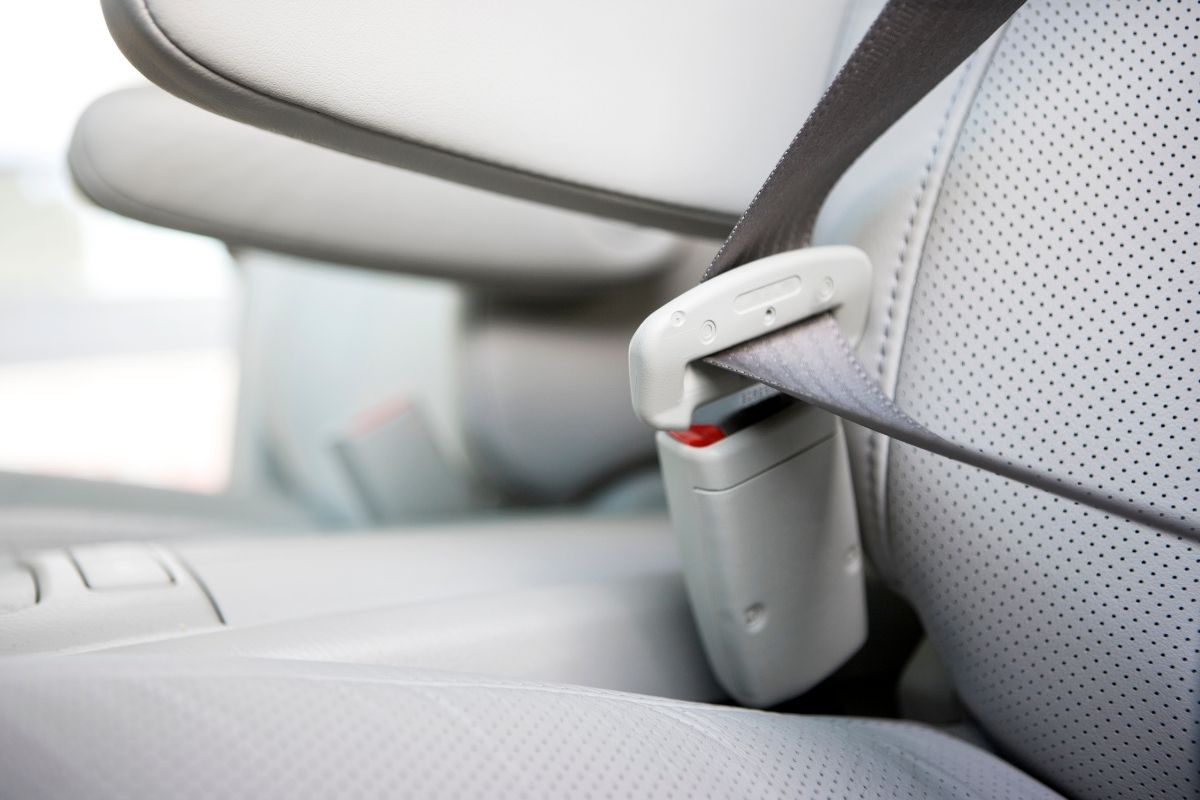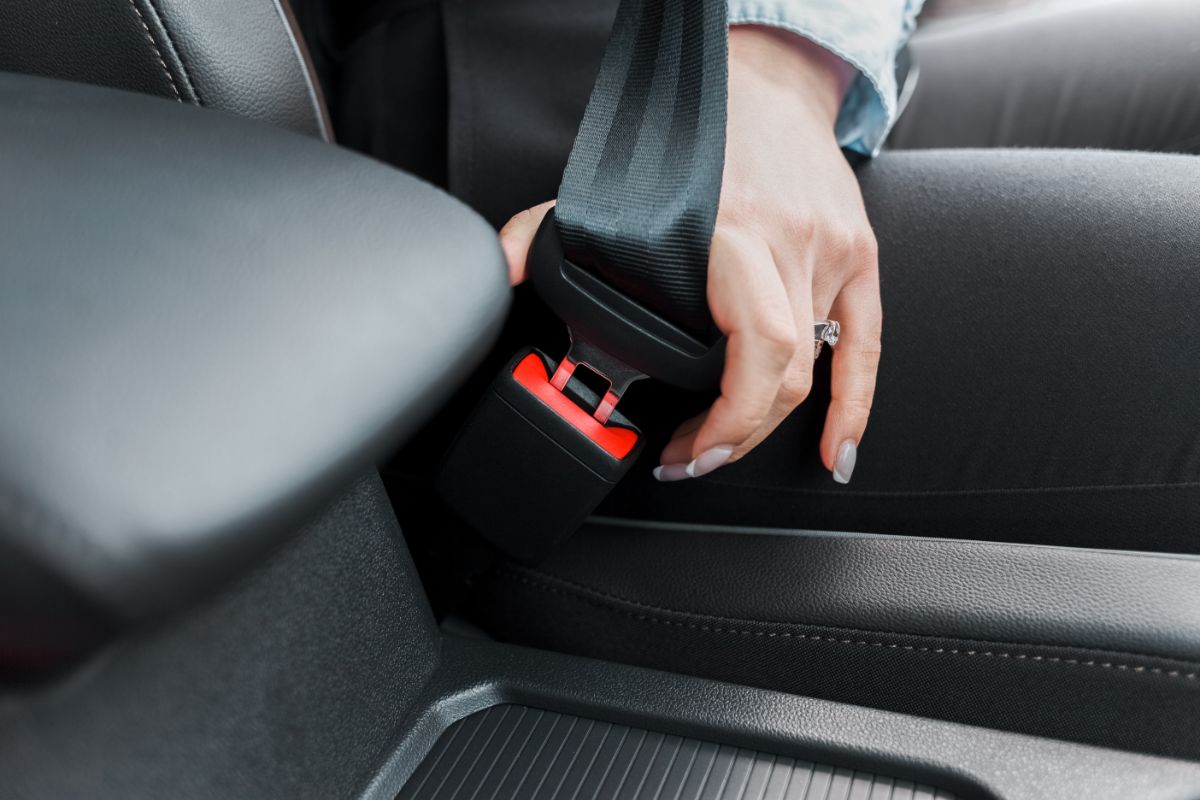Cars are a wonderful invention. They allow people to travel the world and explore areas outside of where they would usually be permitted by just walking or using other types of transport.
However, they can be dangerous and need to be respected as much as possible.

There are lots of things in place that allow drivers of cars to enjoy their vehicles with ease and safety, without having to stress about the worries of becoming injured or hurt.
Seat belts are imperative to making sure that the drivers of these cars avoid potential injuries and need to be checked to make sure they’re in working order.
Can you bleach seat belts? They might need a clean every now and then, but is it the best idea? Follow our guide to find out more!
What Are Seat Belts? What Do They Do?
Seat belts, quite simply, are the difference between life and death in a lot of situations. Because of how often car crashes can happen and how unexpected they can be, you need to make sure that you’re always wearing your seat belt. If you drive without one, then you risk the potential of injury or worse.
These inventions work by being attached to the inside of a car, connecting themselves to the clip by the bottom of the car seat. By keeping the person in place, in their seat, these belts prevent the driver or passengers from hitting objects at fast speeds, in the event of a crash.
Can You Bleach Seat Belts?
Although you might use bleach to clean your car in certain areas, we always recommend against using bleach to clean your seat belts. There’s a good reason for this. Bleach is very strong and has been known to have certain effects on different materials.
By using bleach on seat belts, you risk ruining the structural integrity of the seat belts, which can make them become frail. This, in turn, will cause them to break a lot easier than usual, which is very bad news and can be very dangerous.
Because the bleach can thin the material, it can cause these belts to break under pressure.
Of course, not every crash that cars get into is big, some of them are a lot smaller and don’t always require seat belts. However, it’s best not to take that chance.
With some crashes happening with a lot of force, you need your seat belt to be ready and strong to prevent you from hitting yourself on something, causing injuries, or worse.
When it comes to finding out whether you can do something within your car, like using bleach on seat belts, we always recommend airing on the side of caution.
If you’re not sure, then you should always do your best to find out, rather than throwing yourself into the deep end without any prior knowledge.
What Are Seat Belts Made Of?
If you’ve ever worn a seat belt, which you will have done if you’ve ever been in a car, then you’ll notice that they have a woven feel to them.
They’re made out of nylon filament yarn most of the time, which is a strong material that is only made stronger by the way that they’re woven together.
Sometimes, seat belts can be made from high tensile polyester filament yarn. This is similar to the previous material mentioned, just without the nylon involved.
However, you can drive safely knowing that these materials have to be checked properly before use by the manufacturing company.
How Strong Are Seat Belts?
It comes as no surprise that these seat belts are designed to withstand a lot of pressure and a lot of weight.
Lots of different tests and experiments are conducted by manufacturing companies and seat belt makers to ensure that the seat belts are up to the standard and ready for use.

Of course, different seat belt manufacturers will use different materials and techniques to get their products to be as good as they possibly can be.
It’s thought that the average seatbelt can withstand around 1000 pounds of force, which is usually enough to keep the person from leaving the car in the event of a crash, or from hitting something, causing injury.
When using bleach on seat belts you run the risk of losing some of this strength and can cause potential injuries to yourself and the other people in your vehicle.
If there are visible rips or holes in your seat belt then you must contact a professional manufacturer to replace them as soon as possible.
Can I Use Bleach To Change The Color Of My Seatbelts?
We think that although you might want to have different colors to match the rest of the aesthetic of the car’s interior, you need to avoid using bleach completely. We have an alternative for you!
Safety Restore offers a webbing replacement service, coming in a wide range of different colors and shades. For example, if you have a cool red inside of your car, then you should choose burgundy, elegant red, or ferrari red webbing to match your interior. Blue more your thing?
No problem! They have a navy blue and cobalt blue to choose from, which can help to make sure your personality pops out, loud and clear! It’s all down to you and your preference. Just make sure you use Safety Restore for a job well done! You won’t regret it.
Final Thoughts
So, there you have it! You should avoid using bleach whenever you can because it can ruin your seat belts and cause them to become frail and damaged. Because of this, they can be unreliable and will cause potential injuries if they break.
At the end of the day, it’s always better to be safe than sorry and you should do regular checks on your seat belts to ensure that there aren’t any rips or tears. Hopefully, our guide will help you to stay safe! Visit Safety Restore the seat belt experts for any seat belt problems!








